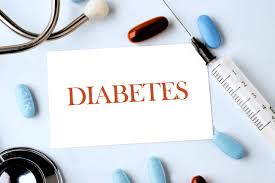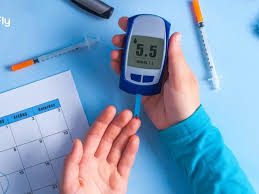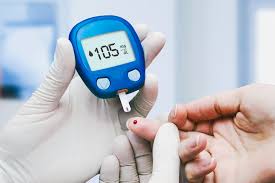Diabetes: A Comprehensive Overview
Diabetes mellitus is a chronic metabolic disorder characterized by elevated blood glucose levels due to either insufficient insulin production, ineffective use of insulin, or both. This condition can lead to serious health complications if not managed properly. This overview will explore the types of diabetes, causes, symptoms, diagnosis, treatment, management strategies, and the broader impact of diabetes on public health.
Types of Diabetes
There are several types of diabetes, each with distinct causes and management strategies. The primary types are:
- Type 1 Diabetes
Type 1 diabetes (T1D) is an autoimmune condition where the immune system attacks and destroys insulin-producing beta cells in the pancreas. This type typically develops in children and young adults, although it can occur at any age. Individuals with T1D require lifelong insulin therapy to manage their blood glucose levels.
- Type 2 Diabetes
Type 2 diabetes (T2D) is the most common form of diabetes, accounting for approximately 90-95% of all diabetes cases. It usually develops in adults, but increasing rates in children and adolescents are being observed due to rising obesity levels. In T2D, the body becomes resistant to insulin or fails to produce enough insulin to maintain normal glucose levels. Lifestyle factors such as obesity, sedentary behavior, and poor diet play significant roles in its development.
- Gestational Diabetes
Gestational diabetes occurs during pregnancy when the body cannot produce enough insulin to meet the increased needs. It usually resolves after childbirth, but women who experience gestational diabetes have a higher risk of developing T2D later in life.
- Other Specific Types
Other less common types of diabetes include:
- Maturity Onset Diabetes of the Young (MODY): A genetic form of diabetes that typically occurs in adolescence or early adulthood.
- Latent Autoimmune Diabetes in Adults (LADA): Often mistaken for T2D, LADA is an autoimmune form of diabetes that occurs in adults and may require insulin treatment over time.
- Secondary Diabetes: This can occur as a result of other medical conditions or the use of certain medications (e.g., corticosteroids).
Causes and Risk Factors
Type 1 Diabetes
The exact cause of Type 1 diabetes is not fully understood, but it is believed to involve a combination of genetic and environmental factors. Viral infections and autoimmune responses may trigger the disease in genetically predisposed individuals.
Type 2 Diabetes
Several risk factors contribute to the development of Type 2 diabetes:
- Genetics: Family history of diabetes increases risk.
- Obesity: Excess body fat, particularly around the abdomen, is a significant risk factor.
- Sedentary Lifestyle: Lack of physical activity contributes to weight gain and insulin resistance.
- Unhealthy Diet: High consumption of processed foods, sugars, and unhealthy fats can increase the risk.
- Age: The risk increases with age, particularly after 45.
- Race and Ethnicity: Certain groups, including African Americans, Hispanics, Native Americans, and Asian Americans, are at higher risk.
Gestational Diabetes
Risk factors for gestational diabetes include:
- Obesity: Overweight women are at a higher risk.
- Age: Women over 25 are more likely to develop gestational diabetes.
- Family History: A family history of diabetes increases risk.
- Previous Gestational Diabetes: Women who had gestational diabetes in previous pregnancies are at higher risk.
Symptoms of Diabetes
Symptoms of diabetes can vary based on the type and the individual’s blood sugar levels. Common symptoms include:
Type 1 Diabetes
- Increased thirst (polydipsia)
- Frequent urination (polyuria)
- Extreme hunger (polyphagia)
- Unexplained weight loss
- Fatigue and weakness
- Blurred vision
Type 2 Diabetes
- Similar to Type 1 but may also include:
- Slow-healing sores or frequent infections
- Areas of darkened skin (acanthosis nigricans), usually in the armpits and neck
- Numbness or tingling in the hands or feet
Gestational Diabetes
Many women with gestational diabetes may not experience symptoms. However, some may notice increased thirst and frequent urination.
Diagnosis
Diagnosis of diabetes typically involves several tests:
- Fasting Blood Glucose Test: Measures blood sugar levels after an overnight fast.
- Normal: Less than 100 mg/dL
- Prediabetes: 100-125 mg/dL
- Diabetes: 126 mg/dL or higher on two separate tests.
- Oral Glucose Tolerance Test (OGTT): Measures blood sugar levels before and two hours after drinking a glucose-rich beverage.
- Normal: Less than 140 mg/dL
- Prediabetes: 140-199 mg/dL
- Diabetes: 200 mg/dL or higher.
- Hemoglobin A1c Test: Provides an average blood sugar level over the past 2-3 months.
- Normal: Below 5.7%
- Prediabetes: 5.7%-6.4%
- Diabetes: 6.5% or higher.
- Random Blood Sugar Test: A blood sample taken at any time, regardless of when the individual last ate. A reading of 200 mg/dL or higher indicates diabetes.
Treatment and Management
Type 1 Diabetes
Management of Type 1 diabetes involves:
- Insulin Therapy: Individuals must administer insulin through injections or an insulin pump.
- Blood Sugar Monitoring: Regular monitoring of blood glucose levels to maintain target ranges.
- Diet and Exercise: A balanced diet and regular physical activity are essential to manage blood sugar levels.
Type 2 Diabetes
Treatment for Type 2 diabetes may include:
- Lifestyle Changes: Adopting a healthy diet, regular exercise, and weight management.
- Oral Medications: Various medications can help lower blood sugar levels by improving insulin sensitivity or stimulating insulin production (e.g., metformin, sulfonylureas).
- Insulin Therapy: May be necessary for some individuals, especially as the disease progresses.
- Regular Monitoring: Keeping track of blood glucose levels is crucial for effective management.
Gestational Diabetes
Management typically includes:
- Blood Sugar Monitoring: Regular monitoring to maintain glucose levels within target ranges.
- Dietary Changes: A balanced diet focused on whole foods, low in refined sugars and carbohydrates.
- Exercise: Regular physical activity to help control blood sugar levels.
- Insulin Therapy: In some cases, insulin injections may be needed if blood sugar levels are not adequately controlled through diet and exercise.
Complications of Diabetes
If left untreated or poorly managed, diabetes can lead to several complications, including:
Short-Term Complications
- Hypoglycemia: Low blood sugar can occur due to excessive insulin, missed meals, or strenuous exercise. Symptoms include shakiness, confusion, sweating, and dizziness.
- Diabetic Ketoacidosis (DKA): A serious condition that occurs when the body starts breaking down fat for energy instead of glucose, leading to a buildup of acids called ketones. Symptoms include nausea, vomiting, abdominal pain, and fruity-smelling breath.
Long-Term Complications
- Cardiovascular Disease: Diabetes significantly increases the risk of heart disease and stroke.
- Neuropathy: Nerve damage, often in the legs and feet, leading to pain, tingling, and loss of sensation.
- Retinopathy: Damage to the blood vessels in the retina can lead to vision loss and blindness.
- Nephropathy: Kidney damage can result in kidney failure or the need for dialysis.
- Foot Complications: Poor circulation and nerve damage can lead to infections and complications, sometimes resulting in amputations.
Lifestyle and Prevention Strategies
Preventing Type 2 Diabetes
While Type 1 diabetes cannot be prevented, Type 2 diabetes can often be prevented or delayed through:
- Healthy Eating: A diet rich in whole grains, fruits, vegetables, lean proteins, and healthy fats.
- Regular Physical Activity: At least 150 minutes of moderate-intensity exercise per week, such as brisk walking.
- Weight Management: Maintaining a healthy weight can significantly reduce the risk of developing Type 2 diabetes.
- Regular Check-ups: Monitoring blood sugar levels and regular health screenings can help identify prediabetes early.
Managing Diabetes Effectively
For individuals with diabetes, effective management strategies include:
- Education: Understanding the condition, including how to monitor blood sugar, recognize symptoms, and manage medications.
- Support Systems: Engaging with healthcare professionals, diabetes educators, and support groups for ongoing support.
- Regular Health Check-ups: Regular visits to healthcare providers for monitoring and managing complications.
The Global Impact of Diabetes
Diabetes is a significant public health issue worldwide, with the World Health Organization (WHO) reporting over 422 million people affected globally. The economic burden of diabetes is substantial, with increased healthcare costs and lost productivity. Public health initiatives aimed at promoting healthy lifestyles, early detection, and effective management are crucial in addressing this growing epidemic.
Conclusion
Diabetes is a complex and multifaceted condition that requires lifelong management and awareness. Understanding the different types, causes, symptoms, and treatment options is essential for individuals affected by diabetes. With appropriate medical care, lifestyle modifications, and support, many individuals with diabetes can lead healthy and fulfilling lives. Continued research, education, and public health initiatives are vital for reducing the impact of diabetes on individuals and society as a whole.
